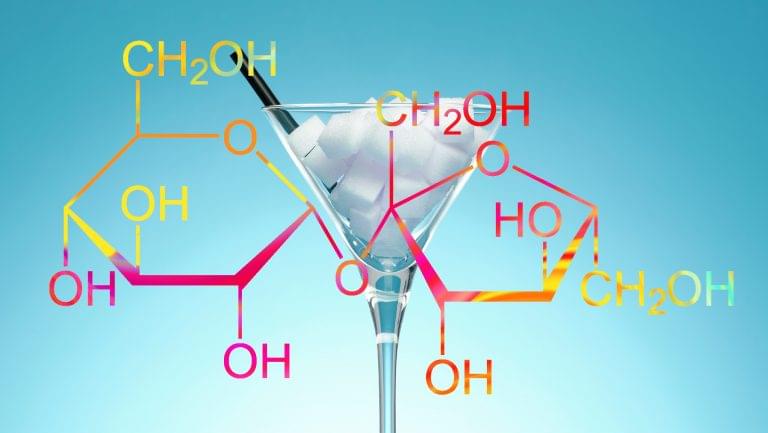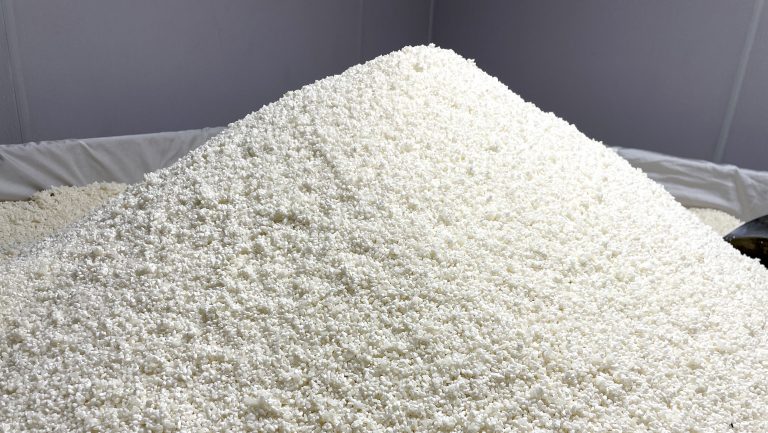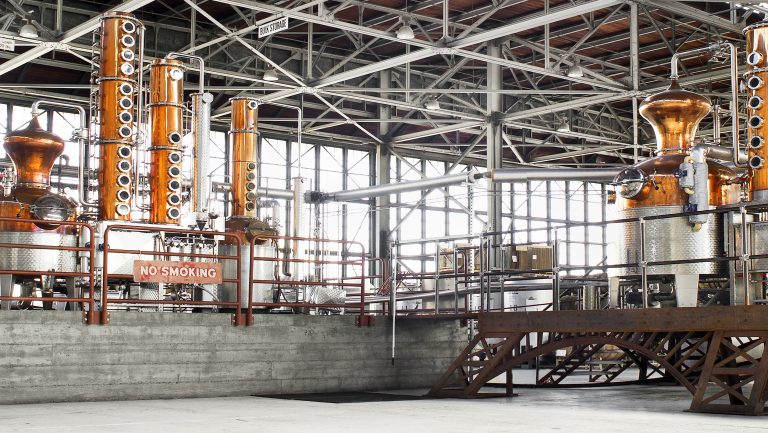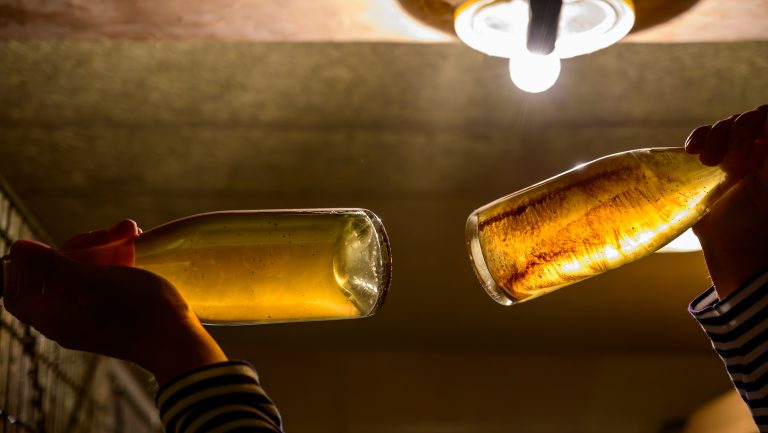It’s so common for customers to ask for their drink “not sweet” that it’s become a joke among bartenders. Although sugar is in just about everything we consume—it’s even listed as one of four ingredients in the first definition of the cocktail, from 1806 (spirits, sugar, water, bitters)—it gets a bad rap from cocktail drinkers. That reputation may be deserved, but sugar is a key ingredient in cocktails, adding texture, balance, and depth to drinks, so it can be helpful for bartenders to know more about sugar and the effect of its sweetness. As new types of sweeteners are made available, and as a body of research grows on the perception of sweetness and how we taste it, bartenders can now adjust levels of sweetness in new and surprising ways.
Sugar and Other Sweeteners
The first thing to know is that sugar is a carbohydrate and the principal source of fuel for the human body. “We need it to survive [and] our body rewards us for consuming it,” says Darcy O’Neil, a chemist and writer at Art of Drink, based in London, Ontario in Canada. That’s the allure of sweetness.
The sugar bartenders most often use in cocktails is sucrose, or table sugar. Sucrose is a disaccharide, meaning that it’s composed of two molecules: glucose and fructose. (When fructose and glucose appear unbonded, they’re considered monosaccharides.) Sucrose can be derived from a variety of sources but is mostly extracted from beets and sugarcane.

Don’t miss the latest drinks industry news and insights. Sign up for our award-winning newsletters and get insider intel, resources, and trends delivered to your inbox every week.
There are also many natural sweeteners besides table sugar, such as honey, sorghum, molasses, agave syrup, maple syrup, sorghum syrup, and coconut palm syrup. These sweeteners contain either some combination of sucrose, fructose, and glucose or just fructose and glucose, but they have a surprising correspondence to sucrose on the sweetness index when measured by dry weight.
Where sucrose measures 1 on the sweetness index—a standard method of comparison—honey is 1.1 and agave is 1.4 (in dry weight measurements). Maple syrup, sorghum syrup, and coconut palm syrup also measure 1 (in dry weight), but because these sweeteners are usually in syrup form, they contain additional water weight, so when they’re used in cocktails, that water is added to the drink as well. (For example, 30 percent of maple syrup is water weight.) Natural sweeteners can also contain additional nutrients, such as enzymes, antioxidants, vitamins, and minerals.
Lastly, there are alternative sweeteners such as sucralose and aspartame. These sugars often register higher on the sweetness index, sometimes by 1,000 times, and are therefore used in lesser quantities. However, a certain portion of the population may taste bitterness when using artificial sweeteners, according to O’Neil.
An outlier is stevia, which is natural but has a sweetness level similar to that of artificial sweeteners.

There’s More Than One Way to Make a Sugar Solution
For ease of use behind the bar, most sweeteners are rendered into a liquid solution. Chief among these solutions is simple syrup—table sugar and water combined in a ratio of 1:1, 3:2, or 2:1 (which is sometimes referred to as rich simple syrup). Simple syrup is the base sweetener in most classic cocktails, such as the daiquiri or Old Fashioned.
The exact ratio used in making simple syrup, and whether heat is applied, differs from bar to bar. Audrey Saunders, the owner and beverage director of Pegu Club in New York City, describes her method: “I don’t cook mine. I utilize equal parts sugar and water, shake to incorporate, let settle, and then repeat the process until [the solution] becomes clear.” This cold process leaves the sucrose molecule intact. Saunders says it “produces a cleaner, high-pitched flavor because the sugar has no opportunity to concentrate itself.”
O’Neil describes an alternative method, called invert sugar, whereby the sucrose is broken down into glucose and fructose molecules through the chemical process of hydrolysis. “If you add a little acid [such as phosphoric acid] and heat it up,” he says, “depending on the acid and temperature … you’re getting a sugar solution that can [impart] a very slight change in taste.” Though the change is slight, O’Neil also agrees with Saunders that the cold method produces what might be considered a “sharper taste.”
Other sweeteners are often made into solutions in the same ratio as simple syrup, though they have additional nutrients (as described above) that may affect the flavor of the cocktails, according to O’Neil. It’s therefore not as simple as replacing sweetener A with sweetener B. Each syrup should be used with its particular attributes in mind, and with respect to the other ingredients, to properly balance a cocktail.
Just as the sweeteners—and the methodology used to impart them—present subtle, and sometimes not so subtle, differences that need to be taken into account, Saunders cautions that there isn’t a one-size-fits-all ratio for achieving balance in cocktails when using recipes either. Spirit choice, alcohol level, citrus, and modifiers are all factors that must be considered. “It’s important not to automatically default to cookie-cutter ratios with mixed drinks,” Saunders says. “Each drink has its own sweet spot, and it’s important to experiment with varying ratios in order to uncover it.”

How You Perceive Sweetness Doesn’t Just Depend on Taste
If different sweeteners and syrups aren’t confusing enough when balancing a cocktail, sight, sound, aroma, and shape can all be used to alter a person’s perception of the sweetness in a drink, according to researchers. Charles Spence, an experimental psychologist at Oxford University, has studied the relationship between certain stimuli and the way in which we perceive sweetness. He calls the experience multisensory. For instance, he says, you can use music to “accentuate the sweetness by playing a [higher-pitched] ‘sweet soundscape,’ or bring out the bitterness by playing a lower-pitched ‘bitter soundscape’ instead.”
Aroma is another stimulus that can affect how we perceive sweetness. In his book Gastrophysics: The New Science of Eating, Spence describes how aromas of caramel, vanilla, and strawberries can make people believe they’re eating something sweeter. Color and shape play a role as well, according to Spence. Red and pink can increase the perception of sweetness and, he says, “time and time again people … have associated sweetness with roundness.”
These stimuli can also be combined to intensify the perception of sweetness. One example is the combination of color and sound. Spence has done research in which the sweet, fruity notes of a glass of Rioja were enhanced “by 15 to 20 percent by combining ‘sweet lighting’ [red] with ‘sweet music’ [higher pitched].”
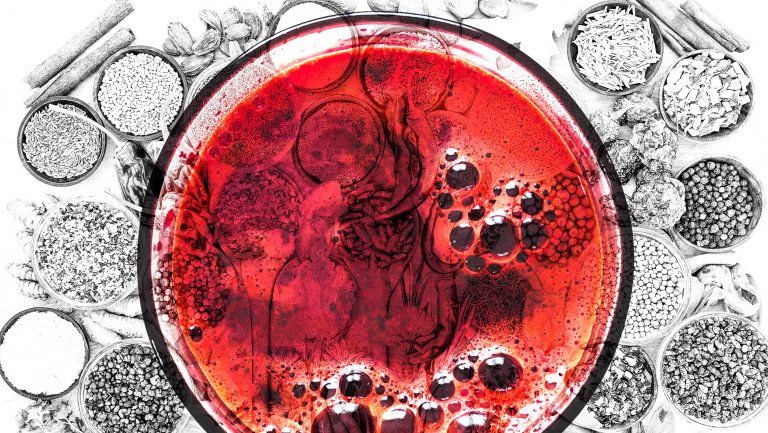
The Science of Rapid Liquor Infusion
Bartenders are playing with pressure, temperature, and time to get flavor faster
It May Hinge on Your “Vinotype”
This analysis of sweetness has so far assumed that people taste and experience it more or less uniformly, a notion with which Tim Hanni, MW, a wine business and product development consultant based in Bend, Oregon, flatly disagrees. Hanni, who became a Master of Wine in 1990, has studied the phenomenon of biological individualism, which, he says, suggests that there are “different factors that make us all unique, especially in the sensory world.”
Hanni’s research has suggested that although we’re all different, there are four major sensory sensitivity groups: tolerant, sensitive, hypersensitive, and sweet. He calls them vinotypes, a portmanteau word that combines vin and phenotype. Each of these groups has a different number of taste buds on the tongue—500 or fewer for the tolerant group and as many as 11,000 for the sweet group. And, according to Hanni, not only are these groups characterized by a numerical range of taste buds but they “more or less follow a continuum with other factors, such as number of receptors on each taste bud and types of receptors, [which are] also part of the equation.” What may taste balanced to one person, then, could taste completely lopsided to another.
Therefore, when customers come up to the bar and order a drink “not sweet,” the solution is far more complicated than simply reducing the sugar. There are so many ways to manipulate the sweetness level. Should you use a different sweetener, change your simple syrup, flash a red light, or ask them how they take their coffee, which can be an indicator of vinotype?
Maybe you should. But more importantly, you can. No matter what strategy you employ, the ultimate judge of whether the cocktail is balanced is the individual drinker. “If the guest specifically asks for a less sweet’ drink, there’s some sort of reason for it,” says Saunders. It might be personal taste or a dietary restriction. And though some bartenders might sneer, for Saunders, “the customer is always right,” especially when it comes to taste.

Dispatch
Sign up for our award-winning newsletter
Don’t miss the latest drinks industry news and insights—delivered to your inbox every week.
Derek Brown is an expert on spirits and cocktails who is based in Washington, D.C. He is the author of Spirits, Sugar, Water, Bitters: How the Cocktail Conquered the World. Follow him on Twitter and Instagram @ideasimprove.

